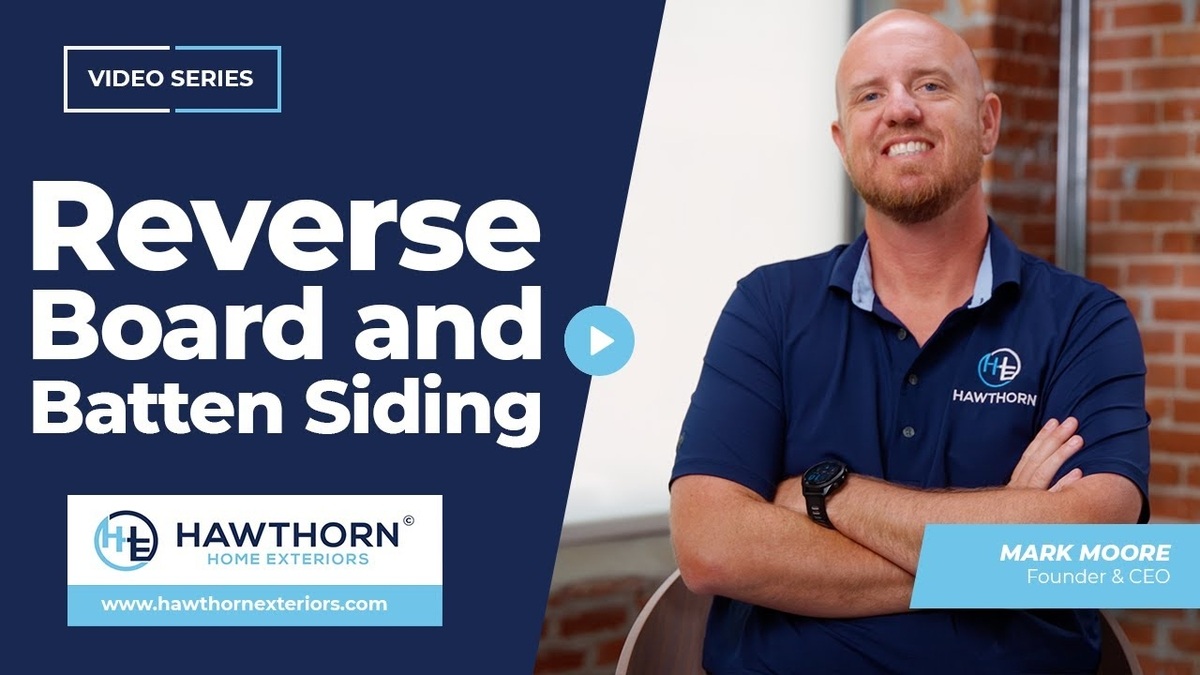When comparing board and batten with reverse board and batten siding, the main difference comes down to texture and depth. Both create clean vertical lines, but each offers a distinct look that can change your home’s overall style.
This guide explains how reverse board and batten siding differs from standard designs, where each works best, and what to know before choosing one for your home. You’ll see how subtle changes in layout can make a big impact on curb appeal.
Understanding the Core Differences Between These Two Siding Styles
Board and batten and reverse board and batten may sound similar. But they have very different looks. Here’s what sets them apart:
- Board and batten siding features raised vertical strips, called battens, that sit on top of flat panels. These battens create depth and shadow, giving the home a more textured and dimensional appearance.
- Reverse board and batten siding uses a flat panel with vertical grooves cut into the surface. These grooves are recessed, which gives the siding a flatter and more understated finish.
What Makes Board and Batten Siding Stand Out
Board and batten siding has become one of the most popular styles we install today. This is especially true in the St. Louis area.
Some standout features include:
- Raised ¾-inch battens that are easy to see from the street
- Installed vertically over wide base panels
- Strong shadow lines that add a modern, textured look
We often use James Hardie board and batten siding for full home exteriors. It also works great in gables and bump-out areas. In my own home, we used board and batten in all the gables and a few bump-outs to create a more custom design.
Pro Tip: Use board and batten in accent areas to break up large walls. This adds interest without changing the whole siding layout.
How Reverse Board and Batten Siding Is Used Today
Reverse board and batten was more common in homes built in the 1960s through the 1980s. We don’t install it as often today. But it is still a valid option for certain homes.
Here’s what defines reverse board and batten:
- Flat panels with recessed vertical grooves
- Simple, clean, and subtle appearance
- Less texture and depth compared to board and batten
If you’re trying to match the look of an older home, we often recommend James Hardie’s Sierra 8-panel. It offers a similar design with reliable performance.
Key Takeaway: Reverse board and batten offers a smooth finish that blends in. Traditional board and batten creates visual contrast that stands out.
Need expert help with reverse board and batten siding? Contact Hawthorn for a free consultation. We’ll help you choose the right style for your home’s age and design.
Where These Siding Styles Are Most Commonly Installed
We often guide homeowners on where each type of siding works best. These are the areas where we most often use board and batten or reverse board and batten siding.
Popular Uses for Board and Batten Siding
This style is used when homeowners want to make certain areas of the home stand out. It works well for:
- Full siding coverage on farmhouse-style homes
- Gables and bump-outs for visual contrast
- Entry areas to create a focal point
We recommend it when a customer wants to add curb appeal and depth to their siding.
Common Uses for Reverse Board and Batten Siding
Reverse board and batten is usually chosen when the goal is to keep the home’s original style. It is most often used in:
- Mid-century homes from the 60s to 80s
- Projects focused on preserving the original design
- Simple exteriors that don’t need added texture
Is Reverse Board and Batten Siding Still Available?
Yes, it is. Even though we install standard boards and batten more often, reverse board and batten is still available. James Hardie continues to make panels that allow us to offer this design when customers want it.
We typically install one reverse board and batten job for every ten board and batten projects. But we’re happy to help homeowners get the look they want.
How to Decide Which Siding Is Best for Your Home
Both options can work well, depending on your design goals. To help you decide, ask yourself these questions:
- Do I want the siding to stand out or blend in?
- Am I trying to match an older style or create something new?
- Which areas of my home should draw attention?
If you want a bold look with strong lines and visual interest, board and batten is a great option. If you prefer a flatter finish or want to match an older home, reverse board and batten might be the better choice.
In Summary
Board and batten and reverse board and batten siding offer two very different looks. Board and batten is popular for its bold texture and depth. Reverse board and batten gives a clean and simple appearance.
We can help you choose the best style based on your home’s design and your personal taste. Whether you want to add new siding or match an older look, we’re here to guide you every step of the way.
Contact Hawthorn today to schedule your free siding consultation. We’ll walk you through your options and help you find the perfect fit for your home.





